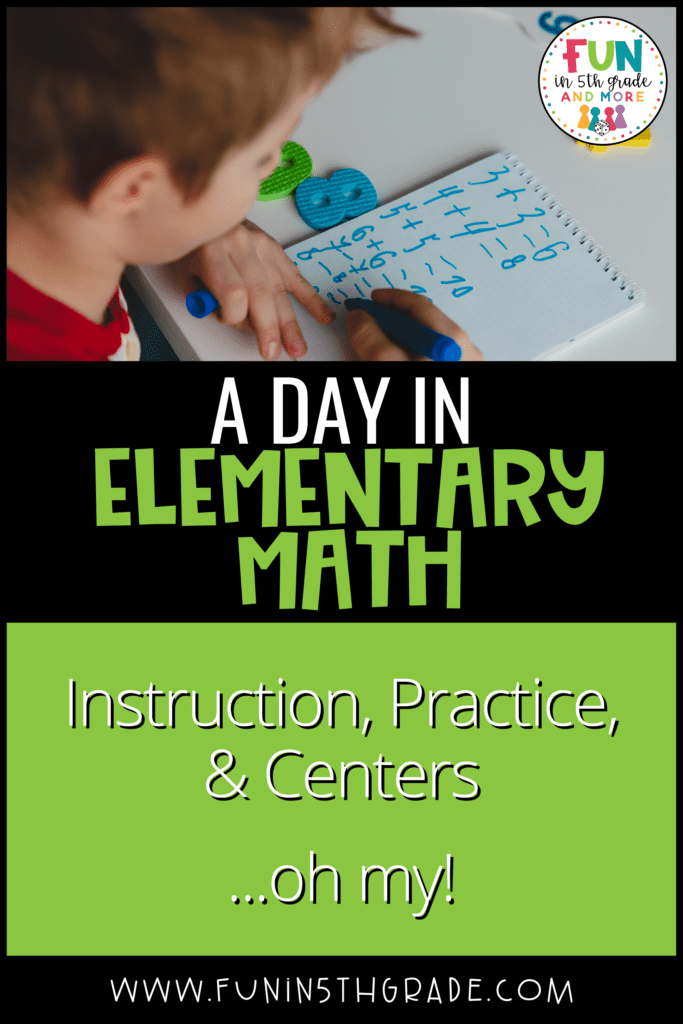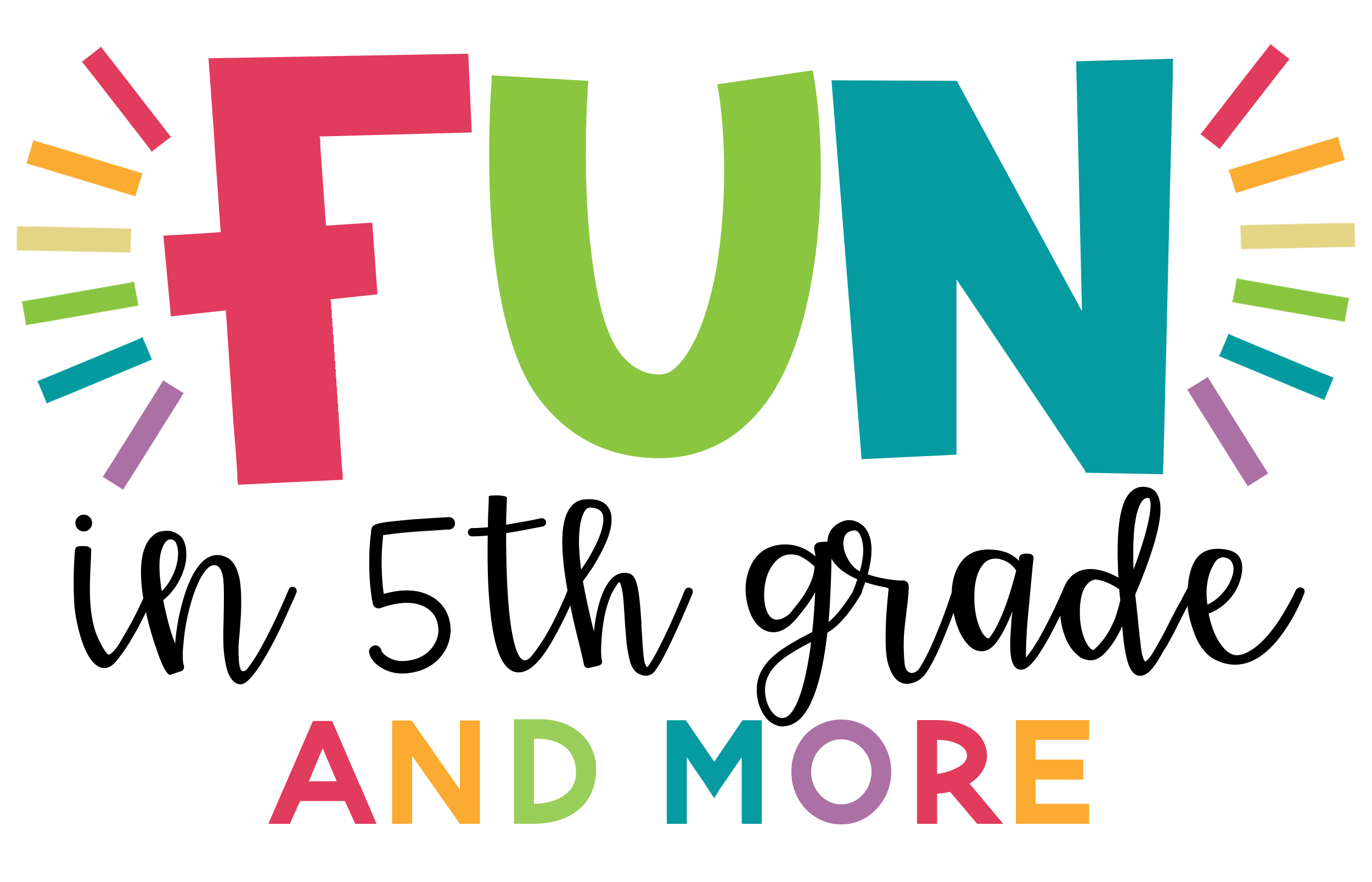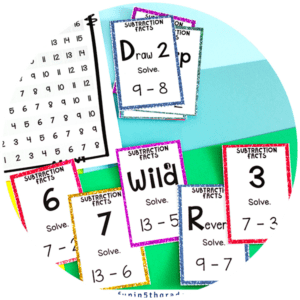Here’s an equation for you…
ES + x – y + 5(z)= A Great Day in Elementary Math
If the ES=Elementary Students, what do you think the ‘x’ and ‘y’ and ‘z’ represent?
Maybe…
- x=Coffee
- y=A Broken Copier
- z=Classroom Associates
Elementary Students + Coffee – A Broken Copier + 5 Classroom Associates = A Great Day in Elementary Math Block
Doesn’t sound too bad, does it?
But let’s be honest, coffee, unlimited copies, and extra help aren’t going to do anything for us unless we have routine and engaging activities. Learn how we set up our elementary math block in 5th grade!
Start with Routine for your Elementary Math Block
Since I am forever making resources for and talking about math centers, I frequently have teachers asking me how I set up a math lesson. What I tell them is that it is actually pretty boring. Not boring because my math lessons lack engagement, but boring because they are routine; they are formulaic…like math.

How I set up my math block
Time: 90 minutes
First, I started with warm-ups. My math warm-ups are consistent in style, but the skills are forever growing and developing and spiraling to keep students engaged and interacting with math in new ways.
After warmups, I moved into an introduction and guided lesson for our newest skill. The nature of the guided lesson changed based on the content, but I tried to be consistent with the amount of time I spent on the lesson and the amount of information covered.
Next, I gave students time to work on a few problems independently. During this time, I observed, answered questions, took notes on student successes and troubles, and formatively assessed how my students were doing with the new skill.
Based on my observations, I began to bring small groups up to meet with me while students finished their independent work and then rotated through centers.
During center time, I typically set up five different stations.
- Center 1: Meet with the teacher
- Center 2: Independent work (today’s lesson)
- Center 3: Math Facts [Blog Post Suggestion: 8 Ways to Practice Math Facts]
- Center 4: Review Center (usually intended to spiral standards)
- Center 5: Game Shows or a group activity [Blog Post Suggestions: The Value of Gamification in Education (using games in the classroom + a challenge for teachers)]

If you want to learn more about my centers, check out this recent post: Math Center Ideas for Upper Elementary where we explain each of these centers in more detail and provide resource suggestions for each type of center listed above.
After meeting in small groups and doing activities in centers, I asked students to regroup and complete an exit ticket based on the day’s learnings.
The next day, the lesson changed, but the routine stayed the same.
Although this is not the most exciting way to set up a math lesson, this formula was highly effective in my classroom. The consistency and routine eliminated confusion for students, and although I didn’t use the same centers every day, I rotated through the different types of centers often enough that students didn’t require much help getting started in each center.
Despite all the fuss about modernizing the classroom, good routines and engaging activities are always going to result in a great math lesson.
So, let’s go back to our equation. This is how I solved it.
Elementary Students + Routine – Confusion + 5 Engaging Centers = A Great Day in Elementary Math
What about you? What is your equation for a perfect math lesson? How do you organize your elementary math block? Find my pre-made math resources here.





